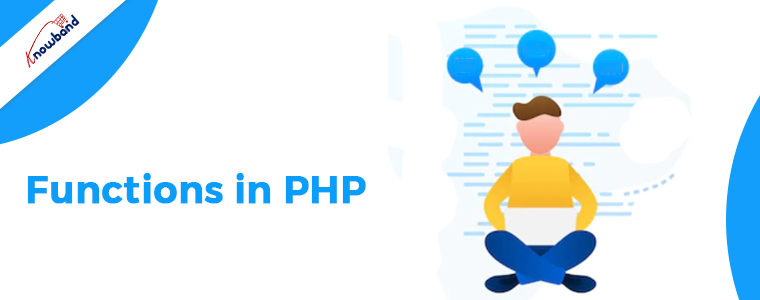Are you interested in learning PHP development? Whether a beginner or an experienced developer, This in-depth tutorial will teach you everything about this potent language. We’ll discuss the basics of PHP programming, including variables, operators, and functions. Plus, we’ll show you how to create dynamic web pages with PHP. So whether you’re just getting started or want to learn more about advanced topics like object-oriented programming, this guide has something for everyone!
Ready to get started? Let’s dive in!
What is PHP?
PHP (recursive acronym for PHP: Hypertext Preprocessor) is a popular open-source general-purpose scripting language that can be embedded in HTML.
In other words, PHP is a programming language that helps you create dynamic websites and web applications. Active means that the content on the webpage can change based on user input or other factors.
PHP is the most popular programming language, with millions of websites using it, including some of the internet’s biggest names like Facebook, WordPress, and Wikipedia.
Why learn PHP development?
PHP is an excellent choice for web development for a few reasons:
1. It’s easy to learn – PHP is relatively easy to understand compared to other languages, making it an excellent choice for beginners. Don’t believe us? Check out our beginner’s guide to PHP tutorials!
2. It’s versatile – Everything from modest personal websites to substantial enterprise-level apps may be built with PHP.
3. It’s well-supported – PHP has excellent community support, with many resources available online to help you learn and troubleshoot problems.
4. It’s free – PHP is an open-source language, which means it’s free to use.
Variables in PHP
In PHP, variables store data such as numbers, strings (text), or arrays (lists). Variables are assigned with the equal (=) sign, and you can output the value of a variable by using the echo command.
Here’s a simple example:
$my_name = “John Doe”;
echo $my_name;
This code will output the string “John Doe” to the screen. As you can see, we first assigned the value “John Doe” to the variable $my_name, then used the echo command to output the deal of $my_name to the screen.
You can also create variables that store more complex data types, such as arrays or objects (we’ll discuss these in more detail later).
Operators in PHP
Operators are used to performing operations on variables and values. PHP has a variety of operators, including arithmetic operators (for performing mathematical functions such as addition and subtraction), assignment operators (for assigning values to variables), and comparison operators (for comparing two values).
Here’s a simple example of an arithmetic operator in action:
$a = 10;
$b = 5;
$c = $a + $b; // addition
$d = $a – $b; // subtraction
$e = $a * $b; // multiplication
$f = $a / $b; // division
echo $c; // outputs 15
echo $d; // outputs 5
echo $e; // outputs 50
echo $f; // outputs 2
As you can see, we first assigned the values 10 and 5 to the variables $a and $b, respectively. We then used the arithmetic operators + (addition), – (subtraction), * (multiplication), and / (division) to perform mathematical operations on these variables. Finally, we used the echo command to output the results of these operations to the screen.
Functions in PHP
A function is a segment of code that carries out a certain task. Processes can take arguments (input values) and return values (output values).
PHP has a wide variety of built-in functions that you can use in your code or create your custom functions.
Here is a straightforward example of a PHP function that accepts two inputs and outputs their sum:
function add($a, $b) {
return $a + $b;
}
echo add(1, 2); // outputs
As you can see, we created a function called add() that takes two arguments ($a and $b). The function then calculates the sum of these arguments and returns the result. Finally, we call the add() function with the arguments 1 and 2 and echo the result (3) to the screen.
In addition to built-in and custom functions, PHP has a wide variety of libraries that provide additional functionality. A library is a collection of code that can be included in your code to provide other features or functionality. PHP libraries are typically distributed as PHP Archive (PHAR) files, similar to ZIP files.
Many different PHP libraries are available for everything from image processing to web scraping. Check out our list of the best PHP libraries for more information.
Namespaces in PHP
A namespace is a way of encapsulating code into logical units. Namespaces are typically used to group related classes and functions.
Here’s a simple example of a namespace in action:
namespace App;
class Car { … }
class Truck { … }
In this example, we’ve placed the Car and Truck classes in the App namespace. We can access these classes using the fully qualified name (e.g., App\Car or App\Truck).
We can also import a specific class from a namespace using the use keyword:
use App\Car;
We’ve imported the Car class from the App namespace in this example. We can now access the Car class without using the fully qualified name.
Error Handling in PHP
PHP has a robust error-handling system. There are several different types of errors that can occur in PHP code:
Syntax errors – These occur when the code is not valid PHP syntax. These are typically easy to fix.
Runtime errors occur when the code is valid PHP syntax, but something goes wrong during execution. These are usually more difficult to debug and fix.
Logic errors occur when the code is syntactically correct, but it doesn’t do what you want it to do. These are the most difficult to debug and fix.
In general, it’s best to avoid all three types of errors. However, sometimes mistakes are unavoidable. When they do occur, it’s essential to know how to handle them gracefully.
PHP has several built-in functions for handling errors:
Die () – This function prints an error message and exits the current script.
trigger_error() – This function raises an error that a custom error handler can handle.
set_error_handler() – When an error occurs, this function sets a unique error handler function that will be called.
The die() and trigger_error() functions are typically used for fatal errors (e.g., syntax errors). The set_error_handler() function is generally used for non-fatal errors (e.g., runtime or logic errors).
Here’s a simple example of how to use the die() function:
if (!file_exists($filename)) {
die(“Error: File not found”);
}
In this illustration, we make sure a file already exists before opening it. If the file doesn’t exist, we print an error message and end the current script.
Conclusion
This concludes our PHP development tutorial. In this tutorial, we’ve covered everything you need to know about PHP development. We’ve also provided a downloadable PDF version of this tutorial for your reference. We hope you found this tutorial to be useful. If you have any queries, please leave them in the comments section.








